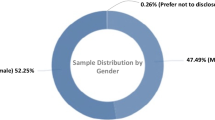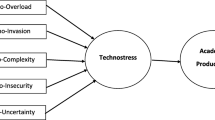Abstract
This study uses data envelopment analysis to analyse the efficiency of educational systems in 31 countries. This type of evaluation is of interest both when formulating a model for analysis and when applying such a model empirically. The efficiency of an educational system must take into account the students' economic and social background, as this is an environmental factor that decisively influences their performance. This is a highly important aspect and so we propose a specific evaluative process for it. Secondly, we evaluate the efficiency of educational systems in different countries, an analysis that has few forerunners since the majority of previous research has focused on analysing a single country. The results suggest that, in general, the most efficient management of educational systems can be found in those countries with a Communist past. They also suggest that there is a series of developed countries, which, judging by the results obtained, could increase their students' performance with even fewer resources than those currently allocated to their educational systems.

Similar content being viewed by others
References
Banker R and Morey R (1986a). Efficiency analysis for exogenously fixed inputs and outputs. Opns Res 34: 513–521.
Banker R and Morey R (1986b). The use of categorical variables in data envelopment analysis. Mngt Sci 32: 1613–1627.
Banker RD, Charnes A and Cooper WW (1984). Some models for estimating technical and scale inefficiencies in data envelopment analysis. Mngt Sci 30: 1078–1092.
Barrow MM (1991). Measuring local education authority performance: a frontier approach. Econ Educ Rev 10: 19–27.
Bessent A and Bessent E (1980). Determining the comparative efficiency of schools through data envelopment analysis. Educ Admin Q 16: 57–75.
Bessent A, Bessent W, Kennington J and Reagan B (1982). An application of mathematical programming to assess productivity in the Houston independent school district. Mngt Sci 28: 1355–1367.
Bifulco R and Bretschneider S (2001). Estimating school efficiency. A comparison of methods using simulated data. Econ Educ Rev 20: 417–429.
Brockett P and Golany B (1996). Using rank statistics for determining programmatic efficiency differences in data envelopment analysis. Mngt Sci 42: 466–472.
Charnes A, Cooper W and Rhodes E (1978). Measuring the efficiency of decision making units. Eur J Opl Res 2: 429–444.
Charnes A, Cooper W and Rhodes E (1981). Evaluating program and managerial efficiency: an application of data envelopment analysis to program follow through. Mngt Sci 27: 668–697.
Charnes A, Cooper W, Lewin A and Seiford L (1994). Data Envelopment Analysis: Theory Methodology and Application. Kluwer Academic Publishers: Boston.
Commission of the European Communities (2001). The concrete future objectives of education systems. Final Report from the Commission 59, Brussels.
Darling-Hammond L (1991). Accountability mechanisms in big city school systems. ERIC/CUE Digest, 17.
Delannoy F (1998). Reformas en gestión educacional en los 90s. Human Development Department, LCSHD Paper Series N. 21, The World Bank.
Färe R (1984). The existence of plant capacity. Int Econ Rev 25: 209–213.
Färe R, Grosskopf S and Kokkelenberg EC (1989a). Measuring plant capacity, utilization and technical change: a nonparametric approach. Int Econ Rev 30: 655–666.
Färe R, Grosskopf S and Lovell CAK (1985). The Measurement of Efficiency of Production. Kluwer-Nijhoff: Boston.
Färe R, Grosskopf S and Valdmanis V (1989b). Capacity, competition and efficiency in hospitals a nonparametric approach. J Product Anal 1: 123–138.
Fried HO, Schmidt S and Yaisawarng S (1999). Incorporating the operating environment into a nonparametric measure of technical efficiency. J Product Anal 12: 249–267.
Gould E, Lavy V and Paserman MD (2004). Immigrating to opportunity: estimating the effect of school quality using a natural experiment on Ethiopians in Israel. Q J Econ 119: 489–526.
Gray J (1981). A competitive edge: examination results and the probable limits of secondary school effectiveness. Educ Rev 33: 25–35.
Gray J, Jesson D and Jones B (1986). Towards a framework for interpreting schools' examination results. In: Rogers R (ed). Education and Social Class 1986. Falmer Press: London, pp 51–57.
Hanushek EA and Kimko DD (2000). Schooling, labour force quality, and the growth of the nations. Am Econ Rev 90: 1184–1208.
Harris A (2000). What works in school improvement? Lessons from the field and future directions. Educ Res 42: 1–11.
Hoxby CM (1999). The productivity of schools and other local public goods producers. J Publ Econ 14: 1–30.
Jesson D, Mayston D and Smith P (1987). Performance assessment in the education sector: educational and economic perspectives. Oxford Rev Education 13: 249–266.
Johansen L (1968). Production functions and the concept of capacity. In: Forsund FR (ed). Collected Works of Leiv Johansen 1968. North-Holland: Amsterdam, pp 359–382.
Kirjavainen T and Loikkanen HA (1998). Efficiency differences of Finnish senior secondary schools: an application of DEA and Tobit analysis. Econ Educ Rev 16: 303–311.
Levin H and Kelley C (1994). Can education do it alone? Econ Educ Rev 13: 97–108.
Lozano-Vivas A, Pastor JT and Hasan I (2001). European bank performance beyond country Borders: What really matters? Eur Fin Rev 5: 141–165.
Lozano-Vivas A, Pastor JT and Pastor JM (2002). An efficiency comparison of European banking systems operating under different environmental conditions. J Product Anal 18: 59–77.
Ludwin W and Guthrie T (1989). Assessing productivity with data envelopment analysis. Publ Product Rev 12: 361–372.
Mancebón MJ and Bandrés E (1999). Efficiency evaluation in secondary schools: the key role of model specification and of ex post analysis of results. Educ Econ 7: 131–152.
Mancebón MJ and Mar Molinero C (2000). Performance in primary schools. J Opl Res Soc 51: 843–854.
Mayston DJ (2003). Measuring and managing educational performance. J Opl Res Soc 54: 679–691.
Mayston D and Jesson D (1988). Developing models of educational accountability. Oxford Rev Educ 14: 321–339.
Morrison DF (1990). Multivariate Statistical Methods. McGraw-Hill: New York.
Muñiz M (2002). Separating managerial inefficiency and external conditions in data envelopment analysis. Eur J Opns Res 143: 625–643.
Orme C and Smith P (1996). The potential for endogeneity bias in data envelopment analysis. J Opl Res Soc 47: 73–83.
Pastor JT (1996). Translation invariance in data envelopment analysis: a generalization. Ann Opns Res 66: 93–102.
Ray SC (1991). Resource-use efficiency in public schools: a study of Connecticut data. Mngt Sci 37: 1620–1628.
Rico A (1996). Measuring outcome in schools. In: Smith P (ed). Measuring Outcome in the Public Sector 1996. Taylor and Francis, London, pp 118–134.
Rivkin SG (2000). School desegregation, academic attainment, and earnings. J Human Resources 35: 333–346.
Ruggeiro J, Duncombe W and Miner J (1995). On the measurement and causes of technical inefficiency in local public services: with an application to public education. J Publ Adm Res Theory 5: 403–428.
Sammons P, Nuttall D and Cuttance P (1993). Differential school effectiveness: results from a re-analysis of the Inner London Education Authority's Junior School Project data. Br Educ Res J 19: 381–405.
Sengupta JK and Sfeir R (1986). Production frontier estimates of scale in public schools in California. Econ Educ Rev 5: 297–307.
Silva-Portela MCA and Thanassoulis E (2001). Decomposing school and school-type efficiency. Eur J Opl Res 132: 357–373.
Stevens J (1986). Applied Multivariate Statistics for the Social Sciences. Erlbaumn: Hillsdale NJ.
Thanassoulis E and Dunstan P (1994). Guiding schools to improved performance using Data Envelopment Analysis: an illustration with data from a local education authority. J Opl Res Soc 45: 1247–1262.
Acknowledgements
This study is part of a broader research project financed by the Ministry of Science and Technology (ref. SEC2003-047707).
Author information
Authors and Affiliations
Corresponding author
Rights and permissions
About this article
Cite this article
Giménez, V., Prior, D. & Thieme, C. Technical efficiency, managerial efficiency and objective-setting in the educational system: an international comparison. J Oper Res Soc 58, 996–1007 (2007). https://doi.org/10.1057/palgrave.jors.2602213
Received:
Accepted:
Published:
Issue Date:
DOI: https://doi.org/10.1057/palgrave.jors.2602213




